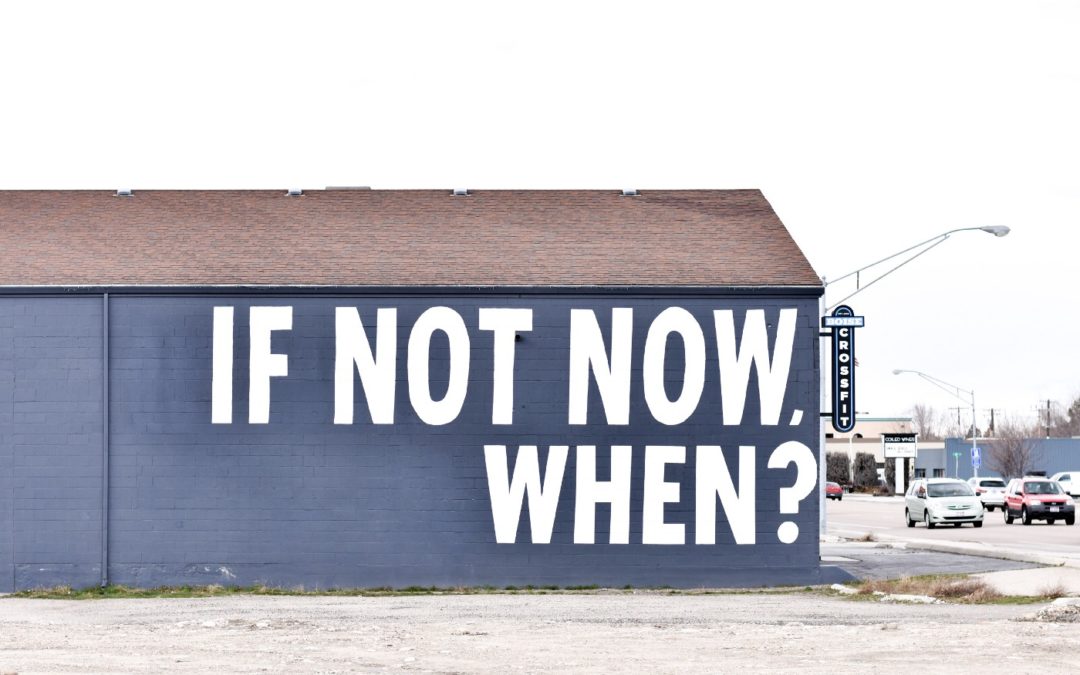According to research by Strava, the social network for athletes, most people will have given up on their New Year’s Resolutions by Sunday, January 19.
While that’s probably good news for all the dedicated workout enthusiasts who will be glad to get their gyms back, given that the most common New Year’s resolution is to exercise more, it’s a bit discouraging for the rest of us.
But just because you’re about to stop hitting the gym to drop weight and build muscle (or whatever your resolutions are), it doesn’t mean that you can’t focus on improving other muscles. May I suggest, your innovation muscles?
Innovation mindsets, skills and behaviors can be learned, but if you don’t continuously use them, like muscles, they can weaken and atrophy. That’s why it’s important to create opportunities to flex them.
One of the tools I use with clients who are committed to building innovation as a capability, rather than scheduling it as an event, is QMWD: the quarterly, monthly, weekly and daily practices required to build and sustain innovation as a habit.
Quarterly
Leave the office and talk to at least three of your customers. It’s tempting to rely on survey results, research reports and listening in on customer service calls as a means to understand what your customers truly think and feel. But there’s incredible (and unintended) bias in those results.
Schedule a day each quarter to get out of the office and meet your customers. Ask them what they like and what they don’t. More importantly, watch them use your products, and share what you hear and see with your colleagues.
Monthly
Share a mistake you made with your team and what you learned from it. Silicon Valley mantras like “Fail fast and fail often” make for great office décor, but let’s be honest: No one likes to fail, and very few companies reward it.
Instead of repeating these slogans, reframe them as “Learn fast and learn often,” and model the behavior by sharing what you learned from things you did that didn’t go as expected. You’ll build a culture of psychological safety, make smart risks acceptable and increase your team’s resilience — all things required to innovate in a sustainable, repeatable and predictable manner.
Do one thing just for the fun of it. In the research that fed into their book, The Innovator’s DNA, professors Jeff Dyer, Hal Gregersen and Clayton Christensen found that the most common characteristic among the great innovators of our time was their ability to associate, “to make surprising connections across areas of knowledge, industries, even geographies.” Importantly, their associative thinking skills were fed by one or more discovery skills: questioning (asking why, why not and what if), observing, experimenting and networking.
Fuel your associative thinking ability by doing something unrelated to your job or other obligations. Do something simply because it interests you. You might be surprised where it takes you. After all, Steve Jobs studied calligraphy, meditation and car design and used all of those experiences in his day job.
Weekly
Make one small change for one day. Innovation requires change, and if you’re an innovator, that’s the exciting part. But most people struggle with change, a fact that can be frustrating for change agents.
In order to lead people through change, you need to empathize with them and their struggles, which is why you need to create regular moments of change in your work and life. One day each week, make a conscious change. Sit on the other side of the conference room table. Take a different route to the bathroom. Use a black pen instead of a blue one. Even small changes like this can be a bit annoying, and they’ll remind you that change isn’t always the fun adventure you think it is.
Daily
Ask, ‘How can we do this better?’ Innovation is something different that creates value. This is good news because it means that all it takes to be an innovator is to do something different and create value. The easiest way to do that is to find opportunities for improvement.
The next time you’re frustrated with or confused by a process, ask, “How can we do this better?” Better can mean simpler, faster, cheaper or even in a way that is more enjoyable, but whatever it means, the answer will point the way to creating value for you, your team and maybe even your company.
Block time on your calendar for these quarterly, monthly, weekly and daily habits. After all, the best reflection of your priorities is what’s in your calendar. And, if you stick with this, you’ll be among those who achieve their New Year’s goals.
